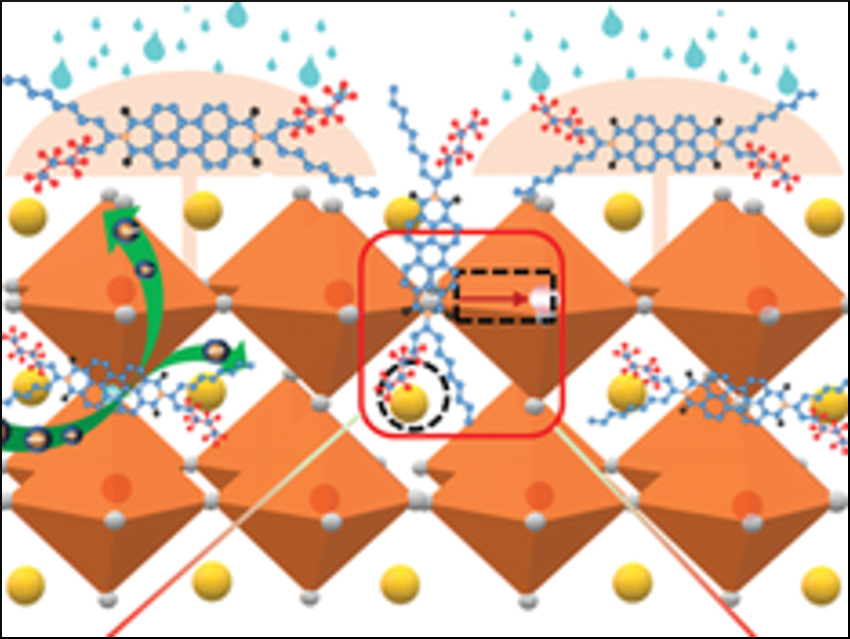Perovskite solar cells could be a low-cost alternative to those based on silicon. The efficiency of cells made from hybrid organic–inorganic halide perovskites has risen considerably over the past years, from roughly 3 % to over 20 %. However, their stability is still insufficient, particularly in the presence of moisture or heat.
Licheng Tan, Yiwang Chen, Nanchang University, China, and colleagues have used a fluorinated perylenediimide (F‐PDI) to protect a perovskite film against humidity and improve its thermal stability. The team used the hydrophobic and semiconductive compound N,N‘‐bis‐(1,1,1,2,2,3,3,4,4‐nonafluorododecan‐6‐yl)‐perylenediimide (pictured in blue) to coat methylammonium lead iodide perovskite, MAPbI3 (pictured in orange). This hybrid material was then used in solar cells.
The F-PDI passivates defects in the perovskite, which protects the cell against degradation by humidity. Strong hydrogen bonding involving the fluorine substituents of F-PDI can immobilize methylamine ions and thus, enhance, the thermal stability of the device. F-PDI also promotes charge transport across grain boundaries due to the chelation between its carbonyl and the perovskite’s lead, which improves performance. Over 80 % of the solar cells’ initial efficiency is retained after exposure to air with a relative humidity of 50 % for 30 days.
- High-Performance Perovskite Solar Cells with Excellent Humidity and Thermo-Stability via Fluorinated Perylenediimide,
Jia Yang, Cong Liu, Chunsheng Cai, Xiaotian Hu, Zengqi Huang, Xiaopeng Duan, Xiangchuan Meng, Zhongyi Yuan, Licheng Tan, Yiwang Chen,
Adv. Energy Mater. 2019, 9, 1900198.
https://doi.org/10.1002/aenm.201900198



